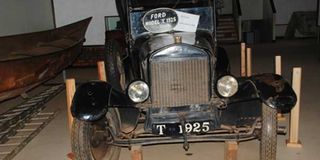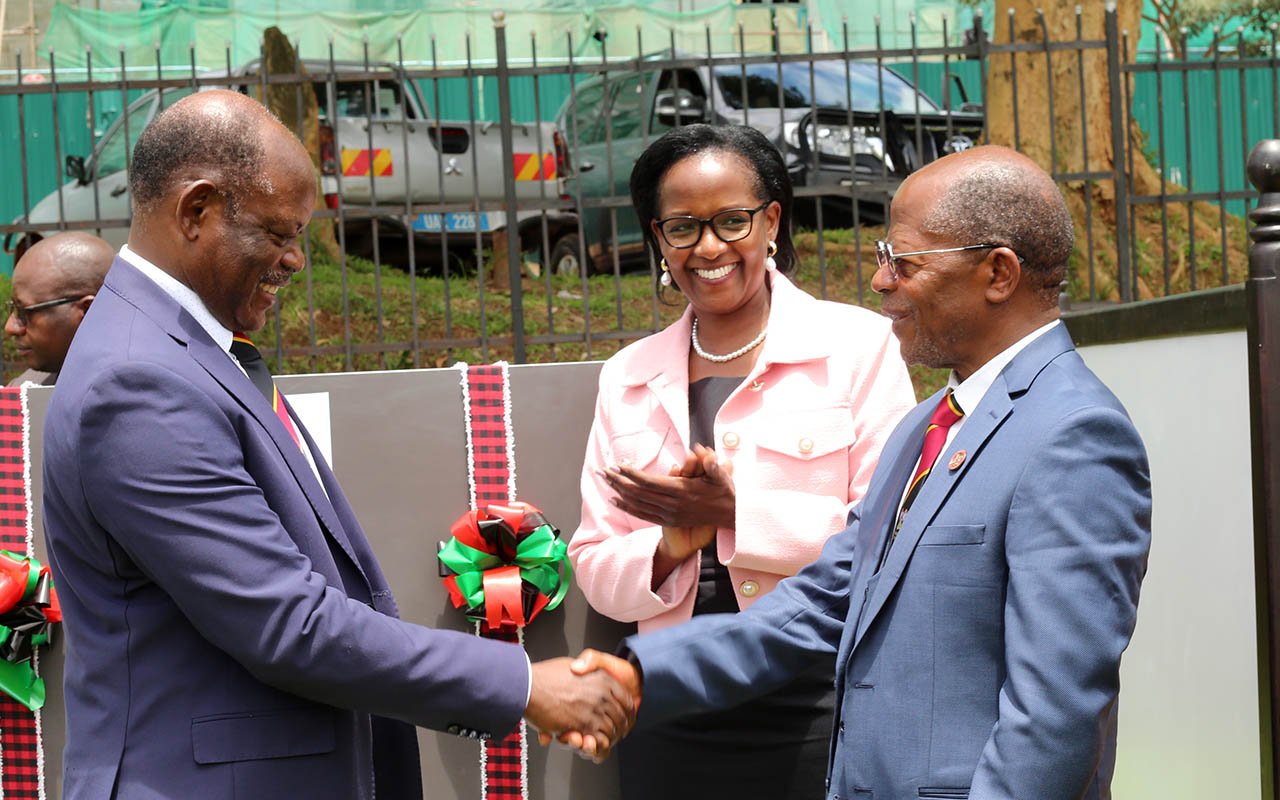What next for National Museum?

RICH HERITAGE: One of the monuments at the National Museum. PHOTOS BY EDGAR R. BATTE
Museums are fine institutions, dedicated to the high values of preservation, education and truth. These are words of one great writer, Robert Hewison. But in Uganda, if such a writer was still alive, he would be disappointed by the few resources dedicated to the development of a national cultural heritage. As Sarah Tumwebaze writes there are plans to demolish the National Museum and in its place erect a multibillion ministry office block:-
The artistically beautiful site of Nyero rock paintings lie in Nyero Village on the way to Ngora district from Kumi District. It’s hard to trace the time when the paintings on that rock were made but what is clear is that they have been in existence for a long time because by the time the Itesot settled in the area some 300 years ago, they found the paintings there.
Preservation of these historical paintings and their meaning to the country’s cultural heritage is what makes the national museum such an important institution.
According to Ms Rose Mwanja Nkaale, the acting Commissioner of Uganda Museum and Monuments, the major aim of establishing the museum was to store and preserve all movable artifact for the benefit of future generations.
At the Uganda Museum for instance, one can obtain information about well over 650 cultural heritage sites dotted across the country. “The Museum is a source of information, knowledge about our life, culture and heritage as a people,” Ms Nkaale explains.
Planning destruction?
However, much as the Uganda Museum is of great importance to the preservation of the country’s different cultures, there is little or nothing at all being done to preserve and develop this national institution.
Already there are plans according to well placed sources to demolish the home of this institution and in its place erect a multimillion building which will house the ministry of Tourism.
Ms Nkaale is also concerned that there is little funding from the government to develop the museum. “ Originally the Museum was being managed by a board of trustees who tried their best to develop it. However, when the government took it over under the department of antiquities in charge of all historical sites, the development programmes started shrinking,” she said.
“There has been little work done to develop educational programmes which are vital for any national museum,” she noted. The poor government funding has also led to the poor performance of the Soroti Museum and closure of the one in Kabale.
Dr Ephraim Kamuhangire, the former commissioner for Museum and Monuments and curator at the National Museum, is disappointed that no efforts have been made to develop sites that were allocated to Soroti and Kabale museums.
Few national properties
He explains that the situation at the main museum in Kampala is not any different because besides the sites and monuments that were declared national property in the 60s, there are no others that have been gazetted over the years because “there are no funds to run them and the ones that are already gazetted, are hardly maintained.”
Dr Kamuhangire says due to lack of funding, the Uganda Museum has lost its place as one of best in East and Central Africa in the 60s to one of the most dilapidated museums in Africa. And according to Ms Nkaale, the fact that the Museum is located in Kampala has not helped many Ugandans to access it.
“Little attention is paid to these sites some of them have been encroached upon. The Nyero rock paintings in Teso are being threatened by the quarrying carried out by the locals .”
And Nyero rock is not the only area that is being vandalised. Dr Kamuhangire says other gazette site of national heritage such as the earth works of Munsa and Kibengo in Mubende District, plus those of Ntutsi and Bigobyamugyenyi in Ssembabule District have been encroached and others destroyed all together in the name of “development”.
Dr Kamuhangire also regrets that the old Kampala Fort which represented the colonial history of Uganda was destroyed to pave way for the construction of the National Mosque and the old fort at Nakasero along with the oldest hospital site was destroyed to allow the construction of a hotel.
Dr Kamuhangire says a country without a cultural heritage will never be appreciative of the value of tourism. He argues that nature-based tourism is hazardous because, “it depends on the dictates of nature such as drought, war and human activities whereas culture-based tourism leads to prosperity.”
He therefore says that the demolition of the Uganda Museum will lead to the destruction of priceless cultural objects. So the big question is who is responsible? Is it the government which has failed to realise the importance of cultural heritage in Uganda or the bureaucrats who have not impressed it upon the government to mind about the national treasure?
An anonymous source explains that it is not the fault of the bureaucrats that nothing is done about preserving our culture but rather, the respective leaders have not supported the bureaucrats because they do not appreciate the importance of culture to Uganda. Dr Kamuhangire explains that the Uganda Museum was established in 1902 and it was initially located in Entebbe, and then moved to Old Kampala, Makerere University until it got a permanent structure in 1954 along Kiira Road.
He adds that by then the museum was a semi autonomous body whose administration was under a private board of trustees. In its [board] position as a semi-autonomous body, the museum would get money from the government that was meant to cater for the staff members and other development activities. It also got money from well wishers like banks and non-government organisations for its programmes. Ms Nkaale says during this time, “the museum operated in a much better way because it had dynamic educational programmes which helped the communities to be aware of the role of the museum in terms of heritage and also learn about their culture”.
However, by a decree in 1977, the board of trustees was abolished and the museum was put under the government by amalgamating its services with the department of antiquities and it thus became the department of antiquities and museums.
Dr Kamuhangire says by this decree, the administration of the museum became a government responsibility and only government funds were made available for running its activities like paying salary and other minor expenses for its maintenance.
In 1997, the World Bank came in with some Shs2 billion to upgrade the museum.
The money was spent on the rehabilitation of the roof of the main museum, purchase of equipment, survey of historical sites and monuments, development of Fort Portal heritage trail, development of Bigobyamugyenyi and Ntusi, construction of the Kabale Museum and the training of staff.
“All of these would have been crowned with the transformation of the department of museum and monuments into a semi autonomous body known as the museum and monuments Agency,” says Dr Kamuhangire.
Obstacles
He explains that the transformation process was undertaken to the extent that by June 2001, the ministry of Public Service which was the overall seer of such activities in all government departments recommended that the department be turned into an agency. Additionally, in November 2003, Cabinet also directed for the creation of the agency.
However, Dr Kamuhangire says “in November 2005, the ministry of Finance, saw no justification for the creation of the agency and recommended that the functions of the museum and monuments become a mere programme in the ministry of Tourism as the department of museum and monuments.



